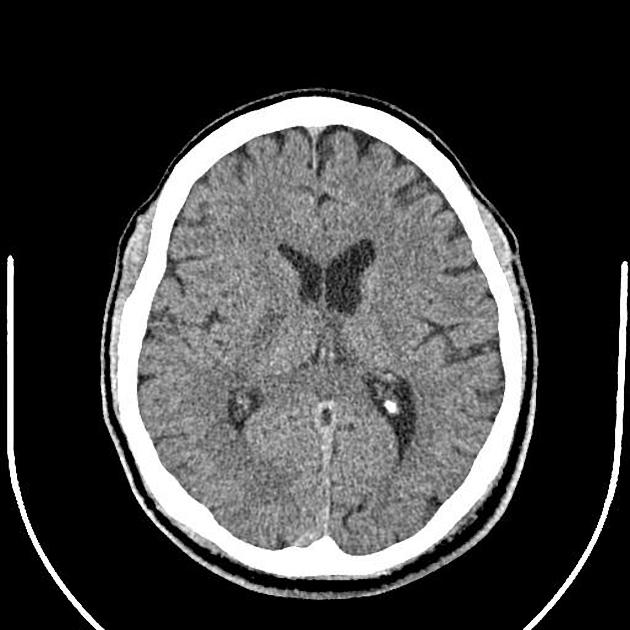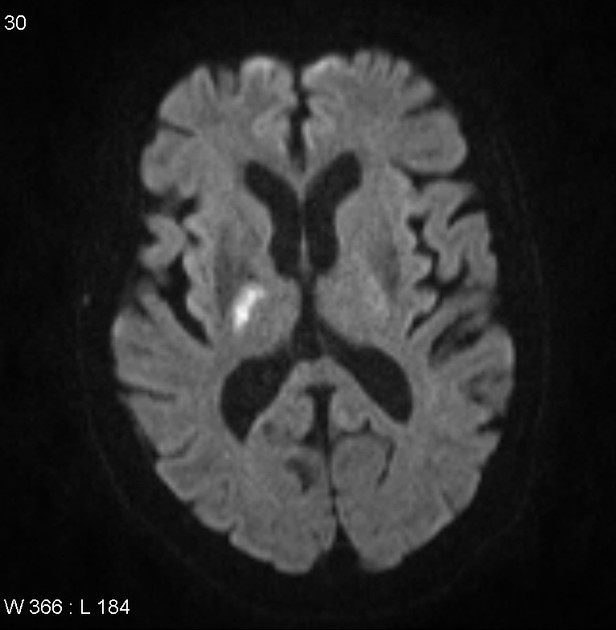Anterior choroidal artery syndrome is a rare entity caused by cerebral infarction in the anterior choroidal artery territory.
On this page:
Clinical presentation
In its complete form, the syndrome is characterized by the triad of 7:
contralateral hemiplegia
contralateral hemisensory loss
-
contralateral homonymous hemianopia
e.g. homonymous quadruple sectoranopia if the lateral geniculate body is involved
e.g. incongruent homonymous hemianopia if the optic tract is involved
Incomplete forms of the syndrome are more common than that of complete forms 7. The syndrome may also be associated with neuropsychological disorders, including left neglect syndrome in right-sided lesions and disorders of language in left-sided lesions 7.
Pathology
Etiology
Complete anterior choroidal artery ichaemic strokes are usually due to cardioembolism or internal carotid artery stenosis. Smaller strokes involving only parts of the territory are typically due to traditional cerebrovascular risk factors, such as type 2 diabetes mellitus, hypertension and hyperlipidemia 5. The classic triad of symptoms of a complete syndrome are rare because of the anastomosis with perforators from the middle cerebral, posterior cerebral and posterior communicating arteries.
Differential diagnosis
The anterior choroidal artery has an extensive area of supply and large variations in its distributed territory 6. As a result of its extensive and strategic supply, anterior choroidal artery infarcts can often be confused with posterior cerebral artery or middle cerebral artery infarcts 6.






 Unable to process the form. Check for errors and try again.
Unable to process the form. Check for errors and try again.